





Get access to engaging talking books, animated learning videos, interesting digital quizzes, and much more—all on the Uolo Learn app! Download now & make learning fun!
Literacy Numeracy
General Awareness
Rhymes and Stories
Name:
Class:
School:

Academic Authors: Melanie Grobler, Sonia Duggal, Roma Jain, Sangeeta Gupta, Anuj Gupta, Monika Jain
Creative Director: Bhavna Tripathi
Book Production: Sanjay Kumar Goel, Tauheed Danish, Amisha Gupta, Naveen Gauniyal
Project Lead: Pooja Gupta
VP, Learning: Abhishek Bhatnagar
All products and brand names used in this book are trademarks, registered trademarks or trade names of their respective owners.
© Uolo EdTech Private Limited
First impression 2025
This book is sold subject to the condition that it shall not by way of trade or otherwise, be lent, resold, hired out, or otherwise circulated without the publisher’s prior written consent in any form of binding or cover other than that in which it is published and without a similar condition including this condition being imposed on the subsequent purchaser and without limiting the rights under copyright reserved above, no part of this publication may be reproduced, stored in or introduced into a retrieval system, or transmitted in any form or by any means, electronic, mechanical, photocopying, recording or otherwise, without the prior written permission of both the copyright owner and the above-mentioned publisher of this book.
Book Title: Sunrise Semester 1A Level B
ISBN: 978-81-982267-3-0
Published by Uolo EdTech Private Limited
Corporate Office Address:
85, Sector 44, Gurugram, Haryana 122003
CIN: U74999DL2017PTC322986
Illustrations and images: www.shutterstock.com, www.stock.adobe.com and www.freepik.com
All suggested use of the internet should be under adult supervision.

elcome to Sunrise, our comprehensive semester series for Early Childhood Education that has been meticulously crafted to align with the guidelines of the Foundational Stage as outlined in the National Education Policy (NEP) 2020. This series is designed to provide a holistic learning experience, fostering the comprehensive development of young learners in accordance with the developmental milestones and learning outcomes specified in the National Curriculum Framework (NCF) 2022.
Sunrise offers a rich blend of interactive and activity-based content to nurture each child's physical, emotional, intellectual, and spiritual growth. Our approach ensures that learning is enjoyable and meaningful, catering to every child's interests and abilities. By integrating various domains of development, we aim to create an environment where children can thrive, explore their unique potentials and cultivate a lifelong love for learning.
The curriculum is structured to promote Physical Development by incorporating activities that enhance motor skills, health, and overall physical well-being. Social and Emotional Learning (SEL) is a critical component focusing on building empathy, cooperation, and strong interpersonal relationships. Through engaging and thought-provoking activities, children develop Intellectual Capacities, fostering critical thinking, problem-solving, and a curious mind.
In line with the NCF 2022, Sunrise also emphasises Spiritual and Moral Development, encouraging children to understand and embody values such as honesty, integrity, and respect for others. We aim to instill a sense of responsibility towards the environment, promoting sustainable practices from an early age.
Our curriculum is not just a series of lessons but a journey of discovery, growth, and joy. We believe that every child is unique, and our tailored approach ensures that each learner can engage with the content in a way that resonates with their individual needs and interests. By providing a nurturing and stimulating environment, Sunrise sets the foundation for future success, preparing children not just for school, but for life.
The Sunrise Level B Kit includes:
Numeracy Workbook


Thank you for embarking on this educational journey with us. Together, we can make early childhood education a bright and promising sunrise for every child.

Sunrise is a carefully crafted activities-based learning program that caters to all domains of Early Childhood Education, including physical, emotional, mental, intellectual, and spiritual development. The program includes textbooks in Literacy, Numeracy, General Awareness, and Rhymes & Stories. The program also extends ample support to teachers through lesson plans and other assets that help attaining the best outcomes.

Engaging Textbooks
Teacher's Manual
Assessment Rubrics for Teachers
Progress Report Sheets
Student and Teacher Apps
Learning Videos
Interactive Tasks and Exercises
The classroom program is augmented by the digital world, which includes assets like animated Talking Books, phonic songs, animated rhymes, animations on pre-number concepts, numbers, and shapes; and other interactive activities.

The National Education Policy (NEP) 2020 represents a transformative shift in the country’s education system. It aims to create a more holistic, dynamic and multidisciplinary approach to education. NEP 2020 focuses on fostering conceptual understanding, skills, values and competencies that align with the demands of the 21st century, while also preserving India’s rich cultural heritage. UOLO is fully committed to actualizing the vision of NEP 2020 by meticulously adhering to its outlined recommendations.










1. Physical and motor development
2. Cognitive development
3. Cultural and artistic development
4. Socio-emotional and ethical development
5. Language and Literacy
6. Numeracy
7. Play and activity-based learning
8. Holistic and multi-faceted learning
9. Inclusion of local traditions of India

10. Technology integration
Competencies and Domains
Teaching and Learning Pedagogy


Rhymes and Stories
Build familiarity with rhythm, phonetics, and vocabulary. Encourage development of gross motor skills.


Flash Cards
Assist development of basic numeracy, literacy and fine motor skills in a playful and engaging way.
1 2 5 6 7 8


Drawing and Scribbling activities
Promotes hand-eye coordination and motor skills.


Pretend Reading and Drawing
Contribute to development of early reading skills.




Storytelling and Role-Playing activities
Develop cognitive abilities like sequencing and understanding cause and effect. Allow exploration of emotional expression in social settings to develop empathy and ethics.



Phonological Awareness Activities
Help in grasping the sounds of spoken language, laying the foundation for reading and writing. 2 5 7


Digital Assets Enhanced auditory learning in an engaging and tech-savvy environment.























Scribble using crayons of different colours� One has b done for you�



Objectives
• Fine motor skills • Hand eye coordination










Trace the dotted lines and take the ant to the apple� Say /a/-/a/-apple�



Read after your teacher� Circle the first letter A and a�


Objectives
• Letter recognition • Association of the letter with its sound • Fine motor skills

This is capital B.




This is small b.






Circle the pictures that begin with the sound of the letter Bb� Say /b/-/b/-balloon� Read after your teacher� Circle the first letter B and b�









This is capital C.


This is small c.



Colour the boxes with pictures that begin with the sound of the letter Cc� Say /k/-/k/-cat�






Read after your teacher� Circle the first letter C and c�
A candle on a cupcake.
Cara cat is crying.

Objectives
• Letter recognition • Association of the pictures with the letter sound • Fine motor skills



This is capital D.

This is small d.


Trace the letters D and d�

Circle the animals that begin with the sound of the letter Dd� Say /d/-/d/-doll�





Read after your teacher� Circle the first letter D and d�
A dog with a drum. A dancing duck.


Objectives
• Letter recognition • Association of the picture with the letter sound • Fine motor skills

Do and Learn
letter stickers� (Use the sticker sheet�)



2� Match the capital letters with the small letters�
A b B c C d D a

Objectives
• Matching • Fine motor skills • Association e name of each picture� Then, paste the correct






4� Make interesting pictures using your fingerprints�
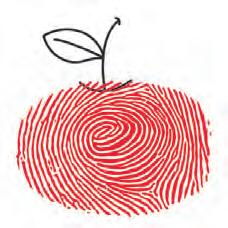





This is capital E.
This is small e.






Circle the pictures that begin with the sound of the letter Ee� Say /e/-/e/-egg�








Read after your teacher� Circle the first letter E and e�
Ella elephant has an egg. An empty box.


Objectives

• Letter recognition • Association of the picture with the letter sound • Fine motor skills





Engage children by exploring the garden scene. Ask questions like: “What do you see in the garden?” “What is the father doing?” “Do you smell flowers when you visit a garden?” and “Why is grandfather sleeping with a newspaper on his face?” Encourage them to describe actions like “running,” “playing,” “smelling,” and “sleeping.” Invite them to share their own picnic experiences to enhance vocabulary and foster discussions about family activities, nature, and caring for the environment.


Objectives
• Vocabulary and language development • Stimulate conversation
• Observation • Cultural awareness

This is capital F.

This is small f.





Trace the letters F and f�

Take each frog to the flower by tracing the dotted lines� Say /f/-/f/-frog�





Read after your teacher� Circle the first letter F and f�
Fara is a friendly fairy.


Objectives
A funny frog.

• Letter recognition • Association of the picture with the letter sound • Fine motor skills


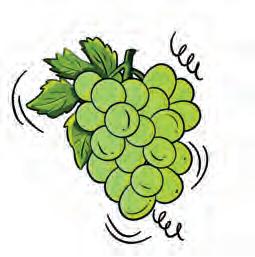
This is capital G.

This is small g.



Trace the letters G and g�

Cross (x) out the pictures that begin with the /g/ sound� Say /g/-/g/-grapes�







Read after your teacher� Circle the first letter G and g�


Objectives

• Letter recognition • Association of the picture with the letter sound • Fine motor skills


This is capital H.




This is small h.

Trace the letters H and h�

Colour the picture that begins with the sound of the letter Hh� Say /h/-/h/-hippo�




Read after your teacher� Circle the first letter H and h�
Hira has a hat.


Objectives
A happy horse.




• Letter recognition • Association of the picture with the letter sound • Fine motor skills


e name of each picture� Then, paste the correct
letter stickers� (Use the sticker sheet�)


2� Match the capital letters with the small letters�
g h f e

Objectives
• Matching • Fine motor skills • Association

3� Say


e




4� Make interesting pictures using your fingerprints�






This is capital I.


This is small i.





Trace the letters I and i�

Draw lines to match Iggy iguana to all the insects�
Say /i/-/i/-insect�







Read after your teacher� Circle the first letter I and i� Iggy iguana loves idlis. Indigo ink in an inkpot.


Objectives

• Letter recognition • Association of the picture with the letter sound • Fine motor skills


j ug
This is capital J.

jeep
This is small j.

Trace the letters J and j�


joker
j uice

acket jigsaw puzzle

Match the jigsaw puzzle pieces that go together�
Say /j/-/j/-jigsaw puzzle�








Read after your teacher� Circle the first letter J and j�
Joe wears jeans. The joker jumps and jiggles.


Objectives

• Letter recognition • Association of the picture with the letter sound • Fine motor skills












An elephant is big.

A cat is small.

A football is big. A cricket ball is small.
Objectives
Observation Visual discrimination Identify big and small objects








Print your hand near the handprint given below. Which handprint is big? Which one is small?
A big elephant, and a small ant, A big tree, and a small plant. A big bus, and a small van, A big ball, and a small can. Some are big and some are small, Let us learn about them all!



Objectives







The giraffe is tall.








The dog is short.


A waterbottle is tall.
Objectives

A glass is short.
Observation Visual discrimination Identify big and small objects






Use a sponge to paint the tall tree.






Objectives
Fine motor skills Identify tall and short objects








Step 1: Stand Tall
Stand on a yoga mat with your feet slightly apart. Keep your hands to your sides.

Step 2: Raise Your Arms
Inhale deeply, and slowly raise your arms upwards. Interlock your fingers above your head.
Slowly raise your heels and try to stand on your toes. Hold the pose for 10 seconds. Exhale and return to the starting position.

Encourage children to talk about how their bodies feel “tall” when they stretch up and “short” when they relax, helping them connect the physical activity to the vocabulary of tall and short.













The waterbottle is heavy.





A pumpkin is heavy.

Objectives
Observation Identify heavy and light objects
The pencil is light. An apple is light.






From the following pairs, hold one thing in each hand. Which is heavy, which is light?








Now, paste their stickers in the correct boxes below. (Use the sticker sheet.)



Objectives
Observation Identify heavy and light objects










The snake is long.
This pencil is long.



The worm is short.

This pencil is short.
Everybody has a nose, Some have short, some have long.
Everybody has hair, Some have short, some have long.
Everybody has legs, Some have short, some have long.
O bjectives Fine motor skills
Visual discrimination
Oral maths vocabulary development
Identify long and short objects






This is a long ribbon. Paste a short ribbon.

Draw long hair on one girl. Draw short hair on the other girl.


Objectives

Fine motor skills Visual discrimination Identify long and short objects










Anjali sees the rat and screams.



A small rat sees two cakes on a table. It goes to eat the bigger one.

The rat tries to hide under a book. But the book is heavy.






It tries to hide under the dog’s bushy tail.


But
the rat’s tail is long. He cannot hide his long tail.
Anjali chases the rat out of the house. The poor rat could not eat the cake.



To emphasize pre-number concepts through the story, the following questions can be asked:
1. Which cake did the rat choose to eat?
2. Why couldn’t the rat hide under the book?
3. Why couldn’t the rat hide its tail?
4. Can you think of something else that is heavy?
5. What are some things in your classroom that are big or small?
Objectives Oral maths vocabulary development Observation








Look at the two balls. They are the same size. So, we can say, ‘Ball A is the same size as Ball B.’

Ball A

Ball B
Ball C is not the same size as Ball D. The two balls are different in size.

Ball C


Ball D
Use visual aids like pictures or objects to demonstrate sameness and differences. Engage children in games or activities that involve sorting or matching objects based on similarities and differences. Encourage verbal communication by asking questions such as, “How are these two things the same?” and “How are they different?”



Objectives
Observation Visual discrimination Identify same and different objects






Tick () the ball that is the same size as the ball in the box.



Join the dots to match the same objects.










O bjectives
Observation Visual discrimination Identify same and different objects








These two blocks are exactly the same.


These two blocks are different.


Let us put these blocks together. Two are same and one is different. The different block is the odd one out.



Different
Let us see more examples of odd ones out.









Objectives Observation Visual discrimination Identify odd objects






Circle the odd one out in each set.









Objectives



Observation Visual discrimination Identify the odd objects













This jug has more water. This jug has less water.
This basket has less eggs. This basket has more eggs.

Objectives
Observation Visual discrimination Identify more and less






Colour one bucket to show more water. Colour the other bucket to show less water.



Objectives Fine motor skills Visual discrimination Identify more and less








This crayon box is full.






This basket is full. This basket is empty. This crayon box is empty.

Objectives
Observation Visual discrimination Identify full and empty containers






Paste the stickers of mangoes to make the top basket full. Leave the bottom basket empty. (Use the sticker sheet.)



Objectives








Connect the dots so each monkey gets one mango.





Objectives
• One-to-one correspondence


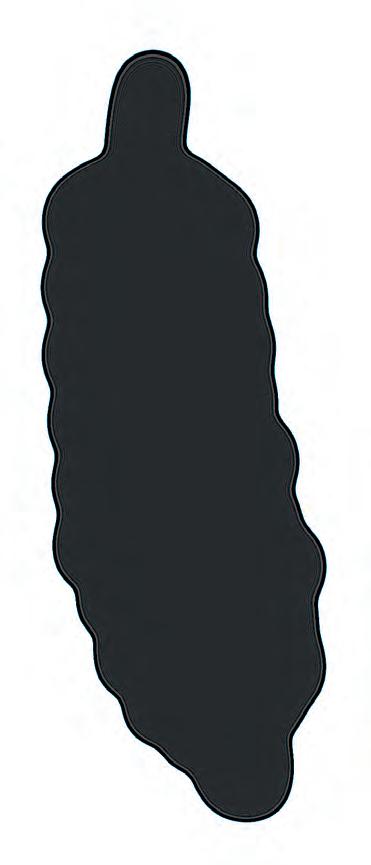













I am Bunty. I am four years old. This is how I have grown.

Paste your picture.



What is your name?
My name is . Objectives
• Observation
• Self awareness


1. Circle who you are.



2. How old are you? Colour the same number of balloons.






3. The colour of your eyes is .
4. The colour of your hair is . boy girl Objectives
• Observation • Self awareness




This is my left hand.
This is my right hand.
Print your left hand here. Print your right hand here.







Make an impression of your right thumb.
Objectives
• Fine motor skills • Observation



Circle three things you can do by yourself.

brush teeth comb hair wear shoes


eat food

ride a tricycle
Objectives
clean up toys pour water
wash hands
• Confidence building • Life skills • Observation
climb stairs


Look at these faces. They show different feelings.
How do you feel when you see these pictures? Draw a face next to each one to show how you feel. angry scared

Objectives
• Fine motor skills • Life skills • Observation

Inform the children that they can use one emoticon more than once.


































Objectives





















• Vocabulary building
• Observation


Tick () the things you enjoy doing with your friends.

Objectives
• Friendship
• Social interaction

• Sharing and caring

arm
hand fingers


Point at each body part in the picture and say their names.
Objectives
leg

stomach
knee
foot
toes

• Identify parts of the body
• Observation













hand knee

arm foot


leg toes
Objectives
• Observation • Matching • Identify parts of the body


How many do you have? Circle the correct number.













Objectives • Observation • Awareness

Look at the parts of the body. Circle the correct actions.





Objectives
• Observation • Matching • Association


Read the sentences.
1.
3.
5.


Objectives
• Identify senses • Observation • Association

Match the body parts with the actions.





Objectives
• Matching
• Hand-eye coordination
• Association





Tick () the things that we use to keep ourselves clean.

toothbrush






Objectives
• Understanding the importance of hygiene • Observation book






I wash my hands before and after I eat. I wash my hands after I play. I wash my hands after I use the bathroom.
Write 1, 2, 3 and 4 to show how you wash your hands.
Scrub your hands with soap. Wet your hands. Wash till the count of 20. Dry your hands.
Objectives
• Ordering • Hygiene awareness • Following instructions



We wear clothes to protect our body. Tick () the clothes you wear.
Objectives
• Vocabulary development





• Visual discrimination




Use a red crayon to colour the t-shirt.

Circle all the red objects with a red crayon.

Objectives


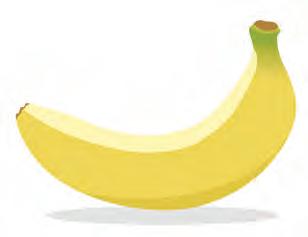
• Colour recognition • Association • Fine motor skills

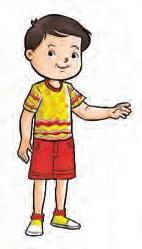


My name is Rohan. This is my family.


Objectives
• Observation Association Recognise members of a family

Paste the pictures of your family members on the tree.

Objectives
• Recognition • Fine motor skills • Family awareness




We love our families. We play together, eat together and stay together

Tick () the happy time you spend with your family.


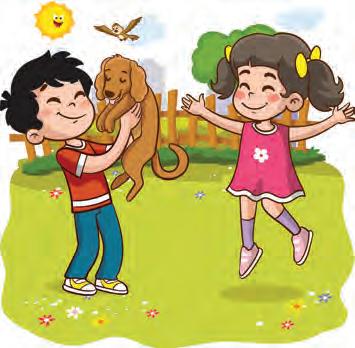
Objectives
• Emotional expression
• Communication skills


• Bonding with family




















Today is Mother’s Day. We got a cake. My mom and grandma cut the cake. We gave them a card and a plant.
Objectives
• Understanding special days
• Family bonding



We can help our family in many ways. Paste a for the things you. (Use the sticker sheet.)



Objectives
• Observation • Family bonding





Use a yellow crayon to colour the mango.

Circle the yellow things with a yellow crayon.

Objectives
• Colour recognition




• Association
• Fine motor skills





Sam and Vani are ready for snacks.



Today we will eat something crunchy!
These are yummy!

I have made vegetable chips for you. They are healthy and tasty.
I like the colours!


Mom leaves a basket of fruit and vegetables on the table.
I love this red apple! It’s so sweet. I love this orange carrot. It is crunchy.

After the snack, the children rinse their mouths.

Encourage the children to look at each picture and talk about it. You may ask these questions to check for understanding:
1. Who makes Sam and Vani some snacks?
2. What does mother make?
3. What does Sam love?
4. What does Vani love?



Hush-a-bye Baby, On the tree top.
When the wind blows, The cradle will rock.
When the bough breaks, The cradle will fall. Down will come baby, Cradle and all.

Ajay wakes up with a happy grin, He brushes his teeth, it’s time to begin. He washes his face with water so cool, Get ready quick, he must go to school. He puts on his clothes so nice and bright, Pulls on his shoes with the laces tied tight. A backpack goes on his little back, He grabs a bag with a healthy snack. He waves goodbye, he’s on his way, Ready to learn and play all day!





Sanjay has a lot of toys. Can you name them?
His toys are on the floor. He does not know where to keep them.



Mama said he must tidy his room. He does not know where to start.
Mama gives him a big basket. Now he can tidy his room.


Mama is proud of Sanjay. Sanjay is happy too. His room is tidy.


Encourage the children to observe each picture and talk about it. You may ask these questions to check for understanding:
1. What does the boy have a lot of?
2. Can he pick up all the toys?
3. What does Mama give him?
4. How is the room, in the end?


Out in the garden, each fine day, With my friends, I like to play. I hop like this, I jump like that, I skip like this on each fine day.
Out in the garden, each fine day, With my friends, I like to play. I run like this, I dance like that, I clap like this on each fine day.



Slowly, slowly, very slowly
Creeps the garden snail.
Slowly, slowly, very slowly
Up the wooden rail.
Quickly, quickly, very quickly
Runs the little mouse.
Quickly, quickly, very quickly
Back inside his house.

Milo the monkey loves mangoes and milk.



It is a hot day. Mother makes mango milkshake. Milo and his sister Mili are excited.
“Let’s wait for it to cool before we drink it,” says Mother.



But Milo doesn’t wait. When mother is not around, Milo drinks it all.
Who drank the milkshake? Milo doesn’t say anything. He cannot talk because his tummy is aching!


Encourage the children to observe each picture and talk about it. You may ask these questions to check for understanding:
1. What does Milo love?
2. Who makes mango milkshake?
3. Does Milo wait?
4. Milo does not say anything. Was that the right thing to do?



Where, oh where has my little dog gone?
Oh where, oh where can he be?
With his ears so short
And his tail so long
Oh where, oh where is he?
I think he went to play outside, With a big ball in his mouth.
For he was getting bored inside, He jumped with a happy shout.
Sticker sheet for page no. 10
Sticker sheet for page no. 22






Sticker sheet for page no. 35











Sticker sheet for page no. 47


Sticker sheet for page no 73


Sunrise is a comprehensive, NCF 2022-based Early Childhood Education program that lays a solid foundation for lifelong well-being and holistic growth, encompassing physical, cognitive, and socio-emotional development.
This semester book has been designed to especially develop the learner's literacy and numeracy skills, their understanding and general awareness about the world around them, as well as their love for reading and listening comprehension skills.
• Play-based learning activities, which promote holistic development of the child in all ECE domains
• School readiness, which is assured in the curriculum and learning design
• All-round development, in areas of physical, cognitive, cultural and socio-emotional domains
• Teacher assets, like assessment tools and lesson plans, to help maximise program quality and outcomes
Uolo partners with K-12 schools to provide technology-enabled learning programs. We believe that pedagogy and technology must come together to deliver scalable learning experiences that generate measurable outcomes. Uolo is trusted by over 15,000+ schools across India, Southeast Asia and the Middle East.
ISBN 978-81-982267-3-0
